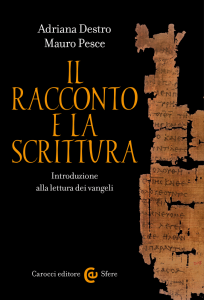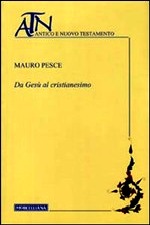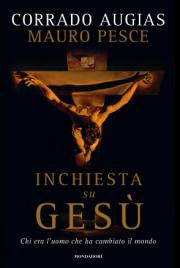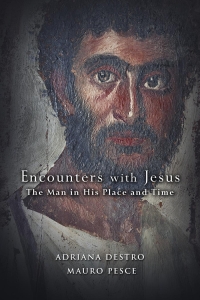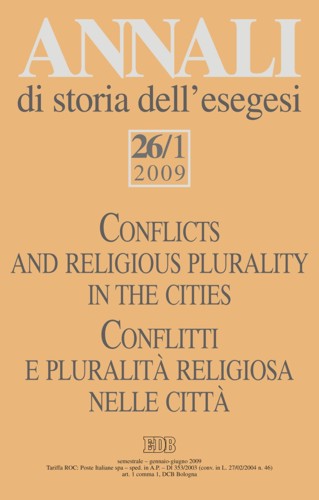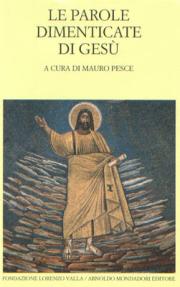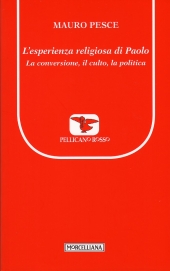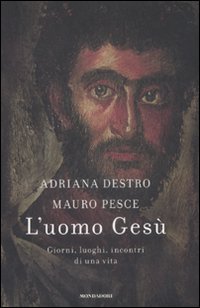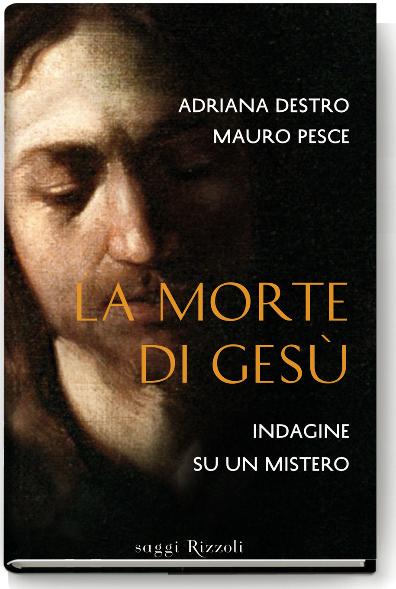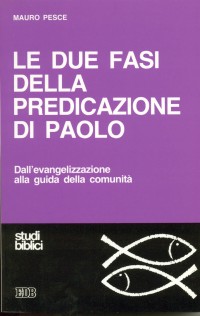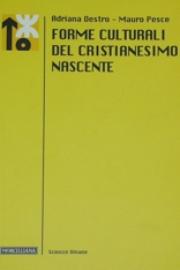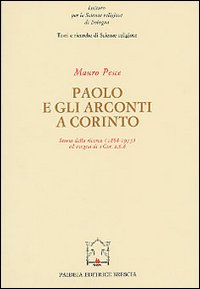Everyday a book - Un libro al giorno nr.21 Jewish and Christian Cosmogony in Late Antiquity
- Dettagli
- Categoria: Documenti
- Pubblicato Mercoledì, 08 Ottobre 2014 09:56
- Visite: 4124
Lance Jenott, Sarit Kattan Gribetz, Jewish and Christian Cosmogony in Late Antiquity. Texts and Studies in Ancient Judaism, 155. Tübingen: Mohr Siebeck, 2013. Pp. x, 336. ISBN 9783161519932. €114.00.
Reviewed by Todd Berzon, Bowdoin College (Questo indirizzo email è protetto dagli spambots. E' necessario abilitare JavaScript per vederlo.)
Jewish and Christian Cosmogony in Late Antiquity belongs to the increasingly large collection of edited volumes based upon colloquia held at Princeton University.1 (#n1) The volume is the result of the editorial work of Lance Jenott and Sarit Kattan Gribetz, two former doctoral students in the Department of Religion, who convened the colloquium on cosmogony in May 2010. In their Introduction, Jenott and Kattan Gribetz offer a compelling and lucid explanation of their volume: “the essays in this volume demonstrate that wonderings about creation featured prominently in the ancient world and penetrated into social, political and ethical spheres far beyond the abstract musings of philosophers. The diverse ways in which Jews and Christians imagined the world’s creation informed their conceptions of past, present and future, the interpretation of their sacred texts, their understanding of the relationship between the divine and human worlds, their ethics, space, art and ritual
practice—in short, how they constructed their own worlds and chose to live their lives” (4–5). They rightly insist that ancient explanations and theories of cosmogony constituted a web of knowledge with implications for the study of theology, ethics, pedagogy, epistemology, community, heresy, liturgy, and exegesis. And cosmogony was not—pace Galen’s dismissive comments in On the Doctrines of Hippocrates and Plato—a fruitless and irrelevant endeavor, destined to fail. Rather, cosmogony provided a diverse array of ancient thinkers a way to link knowledge about the world’s creation with lived experience of the world.
While the Introduction provides a clear summary of the volume’s overarching themes, it offers only a brief (6 pages) introduction to the topic itself. Jenott and Kattan Gribetz have chosen not to include an analysis of the history of the study of cosmogony within the academy. They neither theorize the term—beyond noting its wide-ranging implications and influence—nor provide an intellectual genealogy of the topic. Instead, the vast majority of the Introduction summarizes (quite helpfully, it must be noted) the thirteen essays that follow. The editors have arranged the essays into four sections: (1) Scripture and Interpretation; (2) Theology and Anthropology; (3) Pedagogy and Ethics; (4) Space and Ritual.
The essays offer something for everyone. The volume begins with James C. VanderKam’s essay on Jubilees and its interpretation of Genesis 1–2. VanderKam argues that Jubilees rewrites the cosmogonic narrative in Genesis for (at least) two reasons: (1) to establish a correlation between the number of items created on each day and the Sabbath in order to demonstrate, unequivocally, that the Sabbath “is built into the fabric of creation” (35); and (2) to preclude certain false interpretations, specifically the idea of multiple creators and that elements such as the earth and water have creative power. VanderKam calls the latter emphasis looking “outward, toward the contemporary world and discussions of it” (24). To that end, his conclusion suggests that Jubilees may have been arguing against the writings of Thales, Empedocles, Hesiod, Plato, Xenophanes, all of whom divinized the elements. Those interested in the rabbinic attitudes toward creation would do well to read the essays
of Gwynn Kessler and Yair Furstenberg. The former, “Constant Creation: (Pro)creation in Palestinian Rabbinic Midrashim,” analyzes how human procreation, specifically the embryo, is conceptualized alongside and through the language of the divine birthing of the world (in short, the juxtaposition of the human body and the cosmic body), while the latter, “The Rabbinic Ban on Ma’aseh Bereshit: Sources, Contexts and Concerns,” traces the rabbinic injunction against investigating knowledge or the account of creation to the Second Temple period. Geoffrey S. Smith’s contribution interprets the Valentinian Gospel of Truth not against the backdrop of other Valentinian myths but rather with Ben Sira 24 and the prologue of John’s Gospel. Smith argues that the Gospel of Truth tries to fill in the mythological holes within the Johannine material by using the text of Ben Sira. In that effort, the text should not be read as anti-materialistic or anti-cosmic; rather it is a sustained critique
of Error as the creator of the material world. The text is a hopeful meditation on the coming of Christ, who will reorient and enlighten the human race.
Maren Niehoff’s essay, “The Emergence of Monotheistic Creation Theology in Hellenistic Judaism,” argues that the writings of Philo and Josephus point to the emergence of “monotheistic creation theology,” or “the notion of the Creator’s existence as the only true deity” (85). Niehoff sees the development of this Jewish discourse about God as an attempt to present Judaism into the most compelling interpretation of Stoicism and the Stoic theory of God. Niehoff further argues that the socio-political climate (in the post-Augustan era), which was especially hostile to Judaism, compelled Josephus and Philo to argue that the Mosaic account of creation was the ultimate explication of Stoic natural theology. Cosmogony provided the intellectual space for Philo and Josephus to demonstrate that “their religion conformed to the current insights in Rome about philosophical truth embedded in ancient religious texts” (88–89).
Tuomas Rasimus investigates the origins of the demonic creator Yaldabaoth “within the Ophite branch of Classic Gnostic mythology” (108). Rasimus carefully analyzes the Ophite diagram—“a pictographic ritual manual designed to allow the soul of its user to ascend past hostile gatekeepers on its way to heaven” (109)—as described in Origen’s Contra Celsum, Irenaeus of Lyon’s brief discussion of the Ophite’s exegesis of Genesis, and the Apocryphon of John,. Rasimus argues that the imagery surrounding Yaldabaoth—that he was both a lion and a serpent—was adapted from motifs associated with the archangel Michael. Rasimus further suggests that this correlation may explain why the Ophites demonized Yaldabaoth.
Christian Wildberg offers a detailed reading of a cosmogony from the Corpus Hermeticum (C.H. III). Through the critical analysis of manuscripts Wildberg argues that the marginalia on the text were ultimately incorporated into the body of the text itself. Wildberg attempts to separate out these two strands to reveal how the glossist responds to the original text and how readers of cosmogonic literature, especially within the Hermetic tradition, disagreed fiercely with one another about the human position within the divine order. The text thus captures a debate between the author of the original text and the author of the marginalia about whether humans should embrace lives as part of god’s perfect creation or work “to take possession of god’s creation and lord over it” (164).
Lance Jenott’s essay about Nag Hammadi Codex II, which includes, among other texts, the Hypostasis of the Archons, The Gospel of Philip,, and the Apocryphon of John, suggests that the Codex’s “encouragement to renounce carnal marriage and observe continence in union with Christ fits nicely into the monastic culture” of late antique Egypt (236). Jenott argues that both the Codex and monastic literature share an interest in the image of the luminous Adam—the idea of returning to Adam’s original glory—and the idea of a celibate and spiritual union between Adam and Eve. Through an exegesis of Genesis, the Codex fashions a discourse about Adam that advocates, however different the language, the ideal of the ascetic life dedicated to Christ.
Alexander Kocar investigates the ways in which Valentinian Christians propounded a relationship between cosmogony and an ethnical way of life. Focusing on the Tripartite Tractate and using Stoic literature as a comparative source, Kocar demonstrates that the Valentinians did not neglect ethics (owing to the idea that they were said to be saved by nature) but rather firmly believed that the moral character of individual believers depended upon their response to the arrival of the savior. The Valentinian division of people into three classes—pneumatics (spiritual people), psychics (ensouled people), and hylics (material people)—was not, in fact, fixed. One could change one’s class by changing one’s behavior. Kocar further argues that the moral imperatives behind the Tripartite Tractate should be read in the context of biblical exegesis: far from being an elitist idea, the notion of three classes of humanity—and the ethical and soteriological status of each—is indebted to
Pauline, Matthean, and Johannine motifs.
Richard A. Layton argues that Procopius of Gaza’s commentaries on the Octateuch, specifically his exegesis of Genesis 1, reflect profound pedagogical tensions within the larger social and intellectual culture of late antiquity. Procopius, frustrated that the pagans remained influential as professors, harnessed the account of Genesis 1 to reinforce the norms and values of Christian education. Drawing on writings by Philo and Didymus the Blind concerning Moses, Procopius emphasizes that Moses was (1) the greatest of all lawgivers because his Law followed from the laws of nature as elaborated in the creation account; and (2) a figure of transcendent knowledge, who had gleaned an exclusive vision of the creation. Precisely because Procopius bound together knowledge of God and the purpose of the Law, “cosmogony becomes the foundation and threshold to the Mosaic education” (192).
The essays by Naomi Koltun-Fromm, Mika Ahuvia, and Ophir Münz-Manor—in the section on Space and Ritual—provide detailed discussions of liturgical, artistic, and ritual evidence that complement the mostly exegetical discussions of the earlier chapters. Koltun-Fromm, in her “Rock Over Water: Pre-Historic Rocks and Primordial Waters from Creation to Salvation in Jerusalem,” compares theories of Jerusalem’s sacredness as explicated by the Palestinian Talmud and various midrashim with those offered by Eusebius, Cyril of Jerusalem, Egeria, and others. Writing of the image of the abyss (the tehom) from Genesis 1:2, Ahuvia’s “Darkness Upon the Abyss: Depicting Cosmogony in Late Antiquity,” surveys not only how the deep was rendered in gendered and personified language, but also how the abyss, as depicted in mosaics from Transjordanian churches and as described in various late antique texts, functioned to remind “believers of the continuous beneficent involvement of God and Jesus
Christ in the creation of the world and its maintenance” (266). In Ahuvia’s reading, the textual and art historical evidence related to cosmogony served not only as a way to memorialize the created order but also to instantiate humanity’s continuous experience of it. In his essay, “The Ritualization of Creation in Jewish and Christian Liturgical Texts from Late Antiquity,” Münz-Manor contends that Jewish and Christian liturgical texts (the Christian Anaphora and Jewish Seder Avodah) “exemplify how liturgy makes present primordial times through ritual recitation in a sacred space” (273). He compellingly explains how the Christian Liturgy of St. Basil narrates a sweeping cosmological history as a history of fall and redemption, while Jewish liturgy interpreted cosmology in light of the temple cult. In each case, the biblical past and its myth of cosmogony was read into ritual and spatial traditions of the present. The section on Space and Ritual, as a whole, rounds out the
volume quite nicely by providing careful analysis of the ways in which cosmogony was translated into realm of worshipful practice.
And while the essays are, on balance, highly technical and often drift away from the subject of cosmogony itself, they remain valuable as a collection precisely because of the diversity of the material covered. The extensive use of both Jewish and Christian material across the essays creates a larger comparative tableau onto which cosmogonic evidence can be read. Each of the essays in section on Space and Ritual, for example, make a concerted effort to put into dialogue both Jewish and Christian evidence about the divine control in and over the created world (as embodied in the city of Jerusalem and its sanctuary, Eastern church mosaics, and liturgical poems and prayers). And by dividing the volume into four discrete sections, Jenott and Kattan Gribetz have wisely flagged for their readers the thematic direction of the essays. But within those thematic sections, they have put into dialogue geographically, temporally, and generically distinct material. The volume has value
precisely because reading the essays together highlights cross-cultural, expansive, and discursive trends across cosmogonic narratives and theorizations. When, for example, one reads Furstenberg’s piece alongside Smith’s essay they become mutually reinforcing illustrations of a larger discourse of cosmogonic disputation: the two essays demonstrate, in very different contexts, how disputes about cosmogony were disputes over the fundamental epistemological distinction between human beings and the divine.
And while some essays are stronger than others and the Introduction could have supplied a more programmatic overview of the topic, the volume, as a whole, offers a useful guide to the multifaceted nature and implications of cosmogony. It also includes a comprehensive bibliography of the subject, which will be of value for those in search of additional resources on the subject. The volume’s primary drawback, as with many of the volumes published by Mohr Siebeck, is the price. The volume, nonetheless, should command a wide readership for those interested in seeing how Jewish and Christian sources can be fruitfully studied in explicit and implicit conjunction with each another.
------------------------------------------------------------
Notes:
1. (#t1) The list of edited volumes based upon the colloquia organized by doctoral students at Princeton, includes Adam H. Becker and Annette Yoshiko Reed, eds., The Ways That Never Parted: Jews and Christians in Late Antiquity and the Early Middle Ages (Tübingen: Mohr Siebeck, 2008); Ra’anan S. Boustan and Annette Yoshiko Reed, eds., Heavenly Realms and Earthly Realities in Late Antique Religions (New York: Cambridge University Press, 2004); Gregg Gardner and Kevin Osterloh, eds., Antiquity in Antiquity: Jewish and Christian Pasts in the Greco-Roman World (Tübingen: Mohr Siebeck, 2008); Eduard Iricinschi and Holger M. Zellentin, eds., Heresy and Identity in Late Antiquity; and Philippa Townsend and Moulie Vidas, eds., Revelation, Literature, and Community in Late Antiquity (Tübingen: Mohr Siebeck, 2011).

